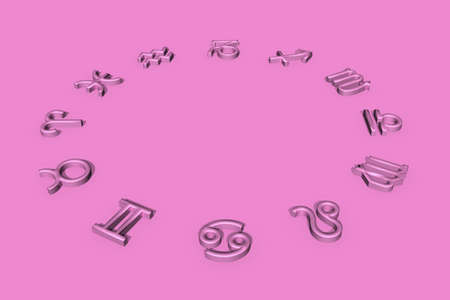Introduction to Panchang in Indian Culture
In the rich tapestry of Indian traditions, the Panchang holds a place of immense cultural and spiritual importance. Panchang, derived from the Sanskrit words Pancha (five) and Anga (parts), is an ancient Hindu calendar that meticulously documents five key elements—Tithi (lunar day), Vara (day of the week), Nakshatra (constellation), Yoga, and Karana. These components together form the foundation for all auspicious timing or Shubh Muhurat calculations in Hindi astrology.
For millions across India, consulting the Panchang is not just a ritual but a daily practice rooted deeply in their way of life. From planning weddings, housewarming ceremonies (Griha Pravesh), to starting new business ventures or even embarking on journeys, every significant event is aligned with favorable timings as prescribed by the Panchang. This ensures harmony with cosmic energies and invokes blessings for success and well-being.
The significance of Panchang in Indian culture goes beyond mere date selection—it is seen as a guide that helps individuals make informed decisions by understanding planetary influences and celestial rhythms. Its relevance is especially evident during major festivals like Diwali, Holi, or Navratri, where exact timings for pujas and rituals are determined using the Panchang, maintaining authenticity and sanctity.
Moreover, in local parlance across various states—be it Hindi-speaking North India or Marathi households in Maharashtra—terms like Shubh Muhurat, Tithi, and Nakshatra are commonly used when discussing plans. Elders often remind the younger generation to “check the Panchang” before fixing any important date, reflecting its ingrained presence in everyday conversations and decisions.
Thus, understanding what Panchang is and why it is indispensable for determining Shubh Muhurat is crucial for anyone seeking to respect and participate authentically in Indian rituals. The process of identifying these auspicious moments is not only about tradition but also about aligning one’s actions with nature’s cycles—a concept cherished deeply within the local ethos.
2. Key Elements of Panchang
Panchang, the traditional Hindu calendar, is central to determining Shubh Muhurat (auspicious timings) in Hindi astrology. It integrates five core components—Tithi, Vara, Nakshatra, Yoga, and Karana—each playing a crucial role in astrological calculations. Understanding these elements helps astrologers and common people alike to select the most favorable time for important events such as marriages, housewarmings (Griha Pravesh), business inaugurations, or religious rituals.
Tithi (Lunar Day)
Tithi refers to the lunar day and signifies the relationship between the Sun and Moon’s longitudinal difference. Each Tithi has its own significance, with specific days considered more auspicious for certain activities. For example, Ekadashi is ideal for fasting and spiritual growth, while Dwadashi is suitable for house-related ceremonies.
Vara (Day of the Week)
Vara denotes the seven days of the week—Ravivar (Sunday), Somvar (Monday), Mangalvar (Tuesday), Budhvar (Wednesday), Guruvar (Thursday), Shukravar (Friday), and Shanivar (Saturday). Each day is governed by a planet and carries its unique energies in Indian culture. Choosing an appropriate Vara is essential for aligning planetary influences favorably during Muhurat selection.
Nakshatra (Lunar Constellation)
Nakshatras are 27 star constellations through which the Moon passes during its monthly cycle. Every Nakshatra has a presiding deity and unique attributes that impact personal traits and event suitability. For example, Rohini Nakshatra is considered highly auspicious for new beginnings, while Ashlesha may be avoided for critical life events.
Yoga
Yoga is formed by the combined positions of the Sun and Moon and affects mental disposition and event outcomes. There are 27 Yogas in total, each classified as either auspicious (Shubh) or inauspicious (Ashubh). Auspicious Yogas like Siddhi Yoga or Amrita Yoga are preferred for positive results in ventures.
Karana
Karana is half of a Tithi; there are eleven Karanas in total, out of which four are fixed and seven moveable. Certain Karanas are deemed very beneficial—for instance, Bava, Balava, Kaulava—while others like Vishti (Bhadra) are generally avoided for starting any good work.
Panchang Components at a Glance
| Component | Description | Cultural Relevance |
|---|---|---|
| Tithi | Lunar day based on Sun-Moon angle | Selects right date for rituals & festivals |
| Vara | Day of week ruled by planets | Aligns tasks with planetary influence |
| Nakshatra | Lunar constellation/star cluster | Affects personality & event timing |
| Yoga | Sun-Moon position combination | Determines auspiciousness of time |
| Karana | Half Tithi segment; 11 types | Indicates suitability for starting work |
The synergy of these five elements makes Panchang an indispensable tool in Indian astrology for determining Shubh Muhurat, blending ancient wisdom with cultural traditions to guide everyday decisions.

3. Cultural Importance of Shubh Muhurat
In Indian tradition, the concept of Shubh Muhurat holds immense value, especially when it comes to important life events and milestones. A “Shubh Muhurat” refers to an auspicious time period calculated using the Panchang (Hindu calendar), ensuring that any activity started during this window is blessed with success, prosperity, and harmony. In the context of Indian society, selecting a favorable muhurat is not just a ritual but a deep-rooted cultural practice that signifies respect for astrology and ancestral wisdom.
For example, marriages in India are rarely conducted without determining a suitable Shubh Muhurat. Families consult experienced astrologers who analyze the Panchang to select a date and time that aligns planetary positions favorably for both bride and groom. This practice is believed to lay the foundation for a harmonious marital journey. Similarly, Griha Pravesh (housewarming) ceremonies are performed only after finding an auspicious muhurat to ensure positive energies bless the new home, warding off any doshas or negative influences.
Furthermore, starting a new business or entering into financial deals often involves looking up Shubh Muhurat as per the local customs. Be it opening a shop in Chandni Chowk or launching an IT startup in Bengaluru, entrepreneurs across the country prefer inaugurating their ventures during times deemed auspicious by the Panchang. Such practices reflect the collective faith in Jyotish Shastra (Vedic astrology) and its role in shaping destiny. By following the Panchang Based Shubh Muhurat Nirdharan Process, Indians believe they invite divine blessings and maximize their chances of success, echoing the age-old adage: “Shubh Aarambh se hi safalta milti hai” – Success comes from an auspicious beginning.
4. Step-by-Step Panchang Based Muhurat Calculation
Determining a Shubh Muhurat (auspicious time) using the Panchang is a time-honoured tradition in Indian culture, especially for significant occasions like marriage, griha pravesh, mundan, or even starting a new business. This process involves careful consultation of the five elements of the Panchang and often includes input from local astrologers as well as digital tools. Here’s a practical step-by-step guide widely followed across India:
Step 1: Collect Personal Details
Gather the necessary details such as date of birth, place of birth, and current location of the person(s) involved. These details help in personalizing the Muhurat as per one’s Janam Kundli (birth chart).
Step 2: Consult the Panchang
The Panchang contains five key elements—Tithi (lunar day), Vaar (weekday), Nakshatra (constellation), Yoga, and Karana. Each plays a crucial role in determining auspiciousness. Traditionally, many families keep printed Panchangs in Hindi or regional languages at home, but modern users also access these via popular apps and websites.
Popular Panchang Apps/Sites in India
| Name | Language Support | Key Features |
|---|---|---|
| Drik Panchang | Hindi, English & Regional | Daily Muhurat, Festivals, Kundli |
| Panchangam.com | Hindi, Tamil, Telugu, etc. | Panchang Calculations, Astrology Advice |
| AstroSage | Hindi & English | Kundli Matching, Muhurat Finder |
| Local Printed Panchangs (e.g., Kashi Vishwanath Panchang) | Hindi/Regional | Diversified Local Traditions |
Step 3: Analyze Panchang Elements for Auspiciousness
An astrologer or user checks for:
- Tithi: Ensures it is favorable for the event type (e.g., Dwitiya for housewarming)
- Nakshatra: Chooses auspicious stars like Rohini or Pushya for weddings and ceremonies
- Yoga/Karana: Avoids Bhadra or unfavorable Yogas/Karanas that may bring obstacles
- Vaar: Selects days traditionally considered lucky (e.g., Thursday for education-related events)
Step 4: Cross-Check with Local Customs & Astrologer’s Guidance
Cultural variations are important—some communities have unique traditions regarding which Nakshatras or Tithis are best avoided or preferred. Consulting a local astrologer ensures alignment with family customs and community practices. Many also refer to respected family Pandits who blend astrological calculations with generational wisdom.
Step 5: Confirm Final Muhurat Using Technology & Traditional Methods
The selected time is cross-verified using both the latest Panchang apps/sites and traditional printed almanacs to avoid discrepancies. In case of conflicts, preference is usually given to advice from experienced astrologers or family priests.
Summary Table: Practical Steps for Shubh Muhurat Selection
| Step | Description |
|---|---|
| Collect Details | Date/place of birth, event details |
| Panchang Consultation | Select app/site or printed version as per region/language preference |
| Panchang Analysis | Tithi, Vaar, Nakshatra, Yoga, Karana analysis relevant to event type |
| Customs & Astrologer Input | Consult local astrologer/family Pandit for cultural compatibility checks |
| Final Confirmation | Cross-check time on multiple platforms; finalize after resolving any differences in calculation/interpretation |
This step-by-step approach ensures that every important life event is aligned with cosmic rhythms according to Indian traditions, blending ancient wisdom with modern technology for reliable results.
5. Regional Variations in Panchang Usage
India is a country of immense diversity, and this is clearly reflected in the way Panchangs are used across different regions for determining Shubh Muhurat. While the core principles of Panchang—Tithi, Nakshatra, Yoga, Karana, and Var—remain the same, various parts of India follow distinct versions of the Panchang based on their historical and cultural preferences.
Vikram Samvat in North India
North Indian communities predominantly use the Vikram Samvat Panchang, which is rooted in ancient Hindu traditions. This system starts its new year with Chaitra Shukla Pratipada and is especially popular in states like Uttar Pradesh, Rajasthan, Madhya Pradesh, and Bihar. The calculations and Muhurat timings are adapted to suit local festivals such as Holi, Diwali, and Teej.
Tamil Panchangam in Tamil Nadu
In contrast, people in Tamil Nadu rely on the Tamil Panchangam. The Tamil calendar begins with Chithirai month (usually mid-April) and emphasizes local observances like Pongal and Tamil New Year. The language, terminology, and even astronomical calculations may differ slightly from northern systems to better resonate with Tamil culture.
Other Regional Panchangs
Similarly, each region has developed its own Panchang: the Bengali Panjika is followed in West Bengal, the Malayalam Panchangam in Kerala, Telugu Panchangam in Andhra Pradesh and Telangana, and so on. These adaptations not only reflect linguistic preferences but also accommodate regional variations in festivals and rituals.
Cultural Nuances and Local Beliefs
It’s important to understand that these regional differences are more than just linguistic or technical—they embody deep-rooted cultural beliefs and practices. For example, a Muhurat considered auspicious by North Indian standards may not be deemed suitable in South India due to differences in tradition or religious interpretation.
This diversity makes Hindi astrology both complex and fascinating. When seeking a Shubh Muhurat for important events like weddings or Griha Pravesh, it is advisable to consult the locally accepted Panchang to ensure alignment with community customs and beliefs.
6. Common Mistakes and Advice by Astrologers
Frequent Errors in Muhurat Selection
Many individuals, while selecting a Shubh Muhurat using the Panchang, tend to overlook certain key aspects. One common mistake is relying solely on general auspicious dates without consulting the specific birth details of those involved. This often leads to choosing a time that may not be personally beneficial. Another error is ignoring regional variations in Panchang calculations, as different parts of India follow distinct local calendars and traditions. Additionally, some people neglect crucial factors such as Rahu Kaal, Choghadiya, or Tithi mismatch, all of which can diminish the positivity of the chosen Muhurat.
Advice from Experienced Hindi Astrologers
Seasoned Indian astrologers recommend always seeking guidance from a qualified Pandit or Jyotishi familiar with your community’s traditions. They stress the importance of double-checking Panchang details like Nakshatra, Yoga, and Karana alongside planetary positions. Astrologers also advise not to rush into picking a date merely for convenience; instead, patience and proper calculation lead to better outcomes. Furthermore, it is important to verify if any Dosha (flaw) exists during the selected period and whether it can be neutralized through puja or remedies.
Best Practices According to Indian Beliefs
- Always use a locally recognized Panchang for accuracy.
- Match personal horoscopes (Janam Kundali) with the proposed Muhurat.
- Avoid periods marked as Ashubh (inauspicious) like Rahu Kaal and Gulik Kaal.
- Consult elders and family priests for traditional guidelines relevant to your region and community.
Cultural Sensitivity in Muhurat Determination
In Indian culture, the process of choosing an auspicious time is seen as a spiritual responsibility. Following these expert tips helps ensure that important life events are celebrated in harmony with cosmic rhythms, thereby inviting prosperity and well-being according to age-old Hindi astrological wisdom.


